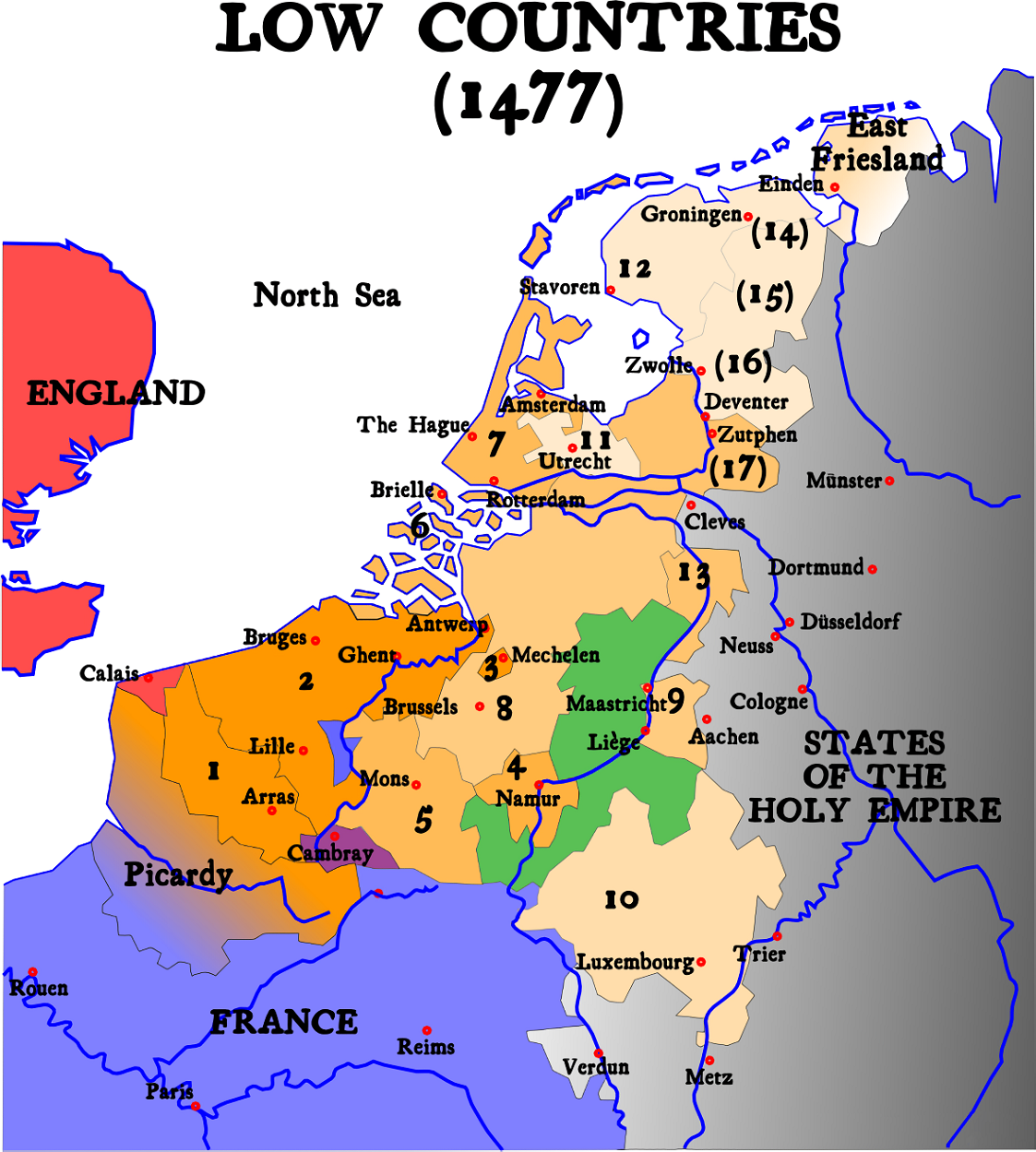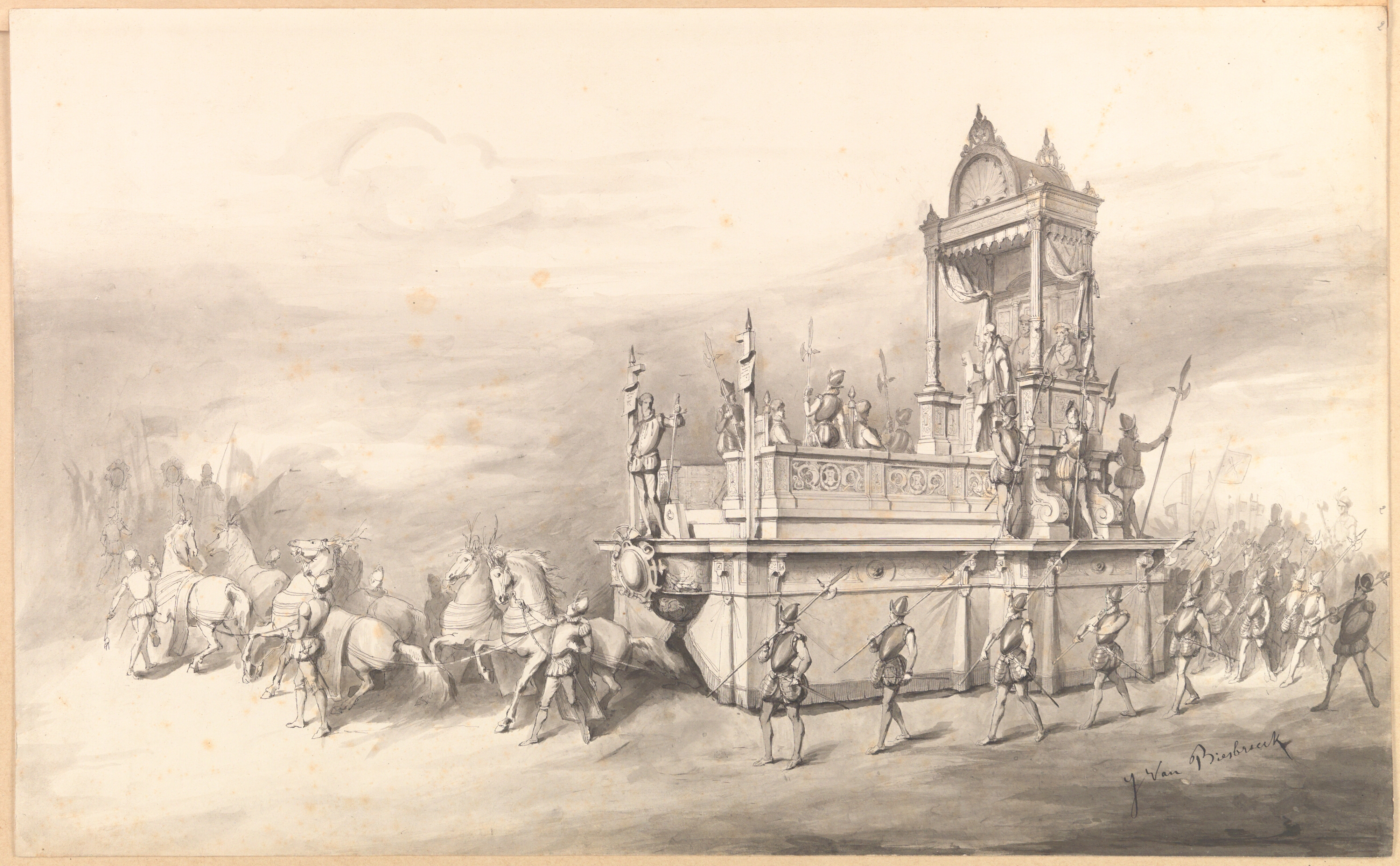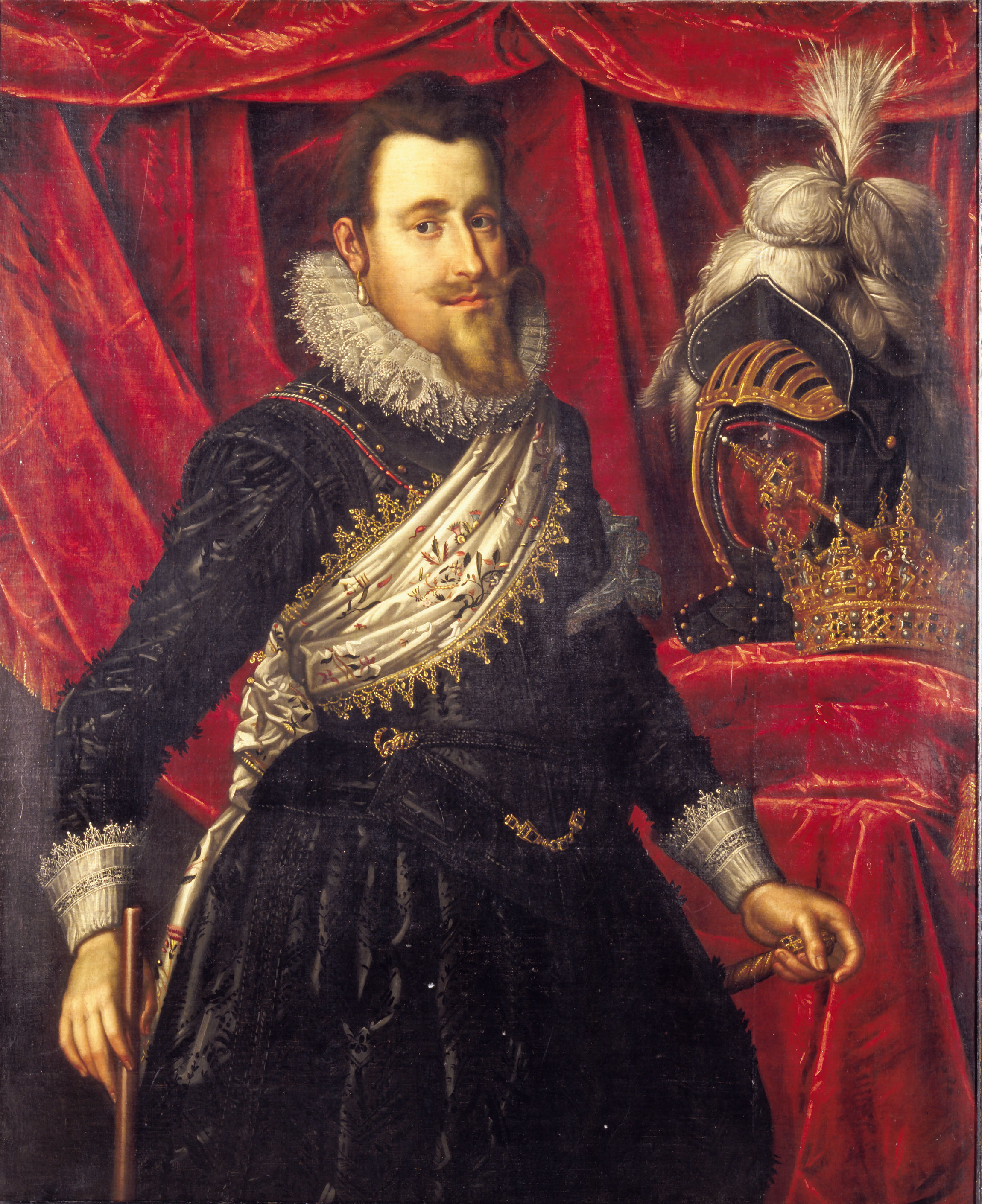|
Edict Of 1577
The Edict of 1577 (also known as the Perpetual Edict or the Eternal Edict) was signed on 12 February 1577 in Marche-en-Famenne by the new Spanish governor-general of the Habsburg Netherlands, Don John of Austria. This accord provided for the removal of Spanish forces from the Netherlands. In addition, the edict agreed to uphold the tenets of the Pacification of Ghent in exchange for an understanding that the Seventeen Provinces, States General would uphold the monarchy and Catholicism. The edict was initially well received. However, in July 1577, Don John began plans for a new campaign against the Dutch rebels. Elizabeth I of England, Elizabeth I approved of both the Pacification of Ghent and the Edict of 1577, therefore offering loans and military aid to the Dutch. When it became clear that John would go back on his agreement, Elizabeth planned to defend the provinces with aid of £100,000 and troops against John if he attacked. English money paid for John Casimir of the Palatin ... [...More Info...] [...Related Items...] OR: [Wikipedia] [Google] [Baidu] |
Marche-en-Famenne
Marche-en-Famenne (; ; literally "Marche in Famenne") is a city and municipality of Wallonia located in the Belgian province of Luxembourg. The municipality consists of the following districts: Aye, Hargimont, Humain, Marche-en-Famenne, On, Roy, and Waha. Other population centres include Grimbiémont, Hollogne, Lignières, Marloie, and Verdenne. History Middle Ages In the early Middle Ages, Marche was just a little hamlet on the Marchette brook, one of the dependencies of the nearby Abbey of Stavelot. In the 12th century, this territory was made part of the County of La Roche. It was ideally located, on the main road between Namur and Luxembourg City, and quickly evolved into a town, which obtained its charter in the 13th century. At the end of the century, in true medieval fashion, it acquired a complete system of defensive walls, with two gates, a series of watchtowers, and a keep. The market place and religious organizations, such as the Carmes convent fou ... [...More Info...] [...Related Items...] OR: [Wikipedia] [Google] [Baidu] |
Habsburg Netherlands
Habsburg Netherlands were the parts of the Low Countries that were ruled by sovereigns of the Holy Roman Empire's House of Habsburg. This rule began in 1482 and ended for the Northern Netherlands in 1581 and for the Southern Netherlands in 1797. The rule began with the death in 1482 of Mary of Burgundy of the House of Valois-Burgundy who was the ruler of the Low Countries and the wife of Holy Roman Emperor Maximilian I of Austria. Their grandson, Emperor Charles V, was born in the Habsburg Netherlands and made Brussels one of his capitals. Becoming known as the Seventeen Provinces in 1549, they were held by the Spanish branch of the Habsburgs from 1556, known as the Spanish Netherlands from that time on. In 1581, in the midst of the Dutch Revolt, the Seven United Provinces seceded from the rest of this territory to form the Dutch Republic. The remaining Spanish Southern Netherlands became the Austrian Netherlands in 1714, after Austrian acquisition under the Treaty of Rastatt. ... [...More Info...] [...Related Items...] OR: [Wikipedia] [Google] [Baidu] |
Don John Of Austria
John of Austria (, ; 24 February 1547 – 1 October 1578) was the illegitimate son of Charles V, Holy Roman Emperor. Charles V recognized him in a codicil to his will. John became a military leader in the service of his half-brother, King Philip II of Spain, Charles V's heir, and was addressed to as a Don. He is best known for his role as the admiral of the Holy League fleet at the Battle of Lepanto and as Governor of the Spanish Netherlands. Life Early years John of Austria was born in Regensburg, Upper Palatinate. His mother was Barbara Blomberg, the daughter of a burgher, and his father was Charles V, Holy Roman Emperor, who had been widowed since 1539. In the summer of 1554, he was taken to the castle of Luis de Quijada in Villagarcía de Campos, Valladolid. Magdalena de Ulloa, de Quijada's wife, took charge of his education, assisted by Latin teacher Guillén Prieto, chaplain García de Morales, and Juan Galarza, a squire. Charles V wrote a codicil, dated 6 June 1 ... [...More Info...] [...Related Items...] OR: [Wikipedia] [Google] [Baidu] |
Netherlands
, Terminology of the Low Countries, informally Holland, is a country in Northwestern Europe, with Caribbean Netherlands, overseas territories in the Caribbean. It is the largest of the four constituent countries of the Kingdom of the Netherlands. The Netherlands consists of Provinces of the Netherlands, twelve provinces; it borders Germany to the east and Belgium to the south, with a North Sea coastline to the north and west. It shares Maritime boundary, maritime borders with the United Kingdom, Germany, and Belgium. The official language is Dutch language, Dutch, with West Frisian language, West Frisian as a secondary official language in the province of Friesland. Dutch, English_language, English, and Papiamento are official in the Caribbean Netherlands, Caribbean territories. The people who are from the Netherlands is often referred to as Dutch people, Dutch Ethnicity, Ethnicity group, not to be confused by the language. ''Netherlands'' literally means "lower countries" i ... [...More Info...] [...Related Items...] OR: [Wikipedia] [Google] [Baidu] |
Pacification Of Ghent
The Pacification of Ghent, signed on 8 November 1576, was an alliance between the provinces of the Habsburg Netherlands. The main objectives were to remove Habsburg Spain, Spanish mercenaries who had made themselves hated by all sides due to their plundering, and to promote a formal peace with the rebellious provinces of Holland and Zeeland. Background In 1566, the Habsburg Netherlands experienced considerable political upheaval and civil unrest, which culminated in the Beeldenstorm, iconoclastic fury of that year. Its ruler, Philip II of Spain, responded by appointing Fernando Álvarez de Toledo, 3rd Duke of Alba as List of governors of the Habsburg Netherlands, Governor-general, and in 1567 he arrived there to restore order, accompanied by an army of mercenaries. Philip soon replaced the most important advisors to former regent Margaret of Parma, either by summarily executing those such as the counts of Lamoral, Count of Egmont, Egmont and Philip de Montmorency, Count of Hoorn, ... [...More Info...] [...Related Items...] OR: [Wikipedia] [Google] [Baidu] |
Seventeen Provinces
The Seventeen Provinces were the Imperial states of the Habsburg Netherlands in the 16th century. They roughly covered the Low Countries, i.e., what is now the Netherlands, Belgium, Luxembourg, and most of the France, French Departments of France, departments of Nord (French department), Nord (French Flanders and French Hainaut) and Pas-de-Calais (Artois). Also within this area were semi-independent fiefdoms, mainly ecclesiastical ones, such as Prince-Bishopric of Liège, Liège, Cambrésis, Cambrai and Principality of Stavelot-Malmedy, Stavelot-Malmedy. The Seventeen Provinces arose from the Burgundian Netherlands, a number of fiefs held by the House of Valois-Burgundy and inherited by the House of Habsburg in 1482, and held by Habsburg Spain from 1556. Starting in 1512, the Provinces formed the major part of the Burgundian Circle. In 1581, the Seven United Provinces seceded to form the Dutch Republic. Composition After the Habsburg emperor Charles V, Holy Roman Emperor, Ch ... [...More Info...] [...Related Items...] OR: [Wikipedia] [Google] [Baidu] |
Elizabeth I Of England
Elizabeth I (7 September 153324 March 1603) was Queen of England and Ireland from 17 November 1558 until her death in 1603. She was the last and longest reigning monarch of the House of Tudor. Her eventful reign, and its effect on history and culture, gave name to the Elizabethan era. Elizabeth was the only surviving child of Henry VIII and his second wife, Anne Boleyn. When Elizabeth was two years old, her parents' marriage was annulled, her mother was executed, and Elizabeth was declared illegitimate. Henry restored her to the line of succession when she was 10. After Henry's death in 1547, Elizabeth's younger half-brother Edward VI ruled until his own death in 1553, bequeathing the crown to a Protestant cousin, Lady Jane Grey, and ignoring the claims of his two half-sisters, Mary and Elizabeth, despite statutes to the contrary. Edward's will was quickly set aside and the Catholic Mary became queen, deposing Jane. During Mary's reign, Elizabeth was imprisoned fo ... [...More Info...] [...Related Items...] OR: [Wikipedia] [Google] [Baidu] |
John Casimir Of The Palatinate-Simmern
John Casimir, Count Palatine of Simmern (German: ''Johann Casimir von Pfalz-Simmern'') (7 March 1543 – Brockhaus Geschichte Second Edition) was a German prince and a younger son of Frederick III, Elector Palatine. A firm Calvinist, he was a leader of mercenary troops in the religious wars of the time, including the Dutch Revolt. From 1583 to 1592, he acted as regent for his nephew, Elector Palatine Frederick IV. Career Count Palatine John Casimir was born in Simmern as the third son of Frederick III, Elector Palatine, and Marie of Brandenburg-Kulmbach, of the Simmern middle electoral line of the House of Wittelsbach. In 1564 John Casimir suggested himself as a bridegroom for Elizabeth I of England and sent her his portrait via the Scottish courtier Sir James Melville. Elizabeth, however, showed no interest in him. On 26 November 1568 he was engaged to the 16-year-old Lutheran Elisabeth of Saxony, a daughter of Augustus, Elector of Saxony and his first wife Anne of Denm ... [...More Info...] [...Related Items...] OR: [Wikipedia] [Google] [Baidu] |
List Of Treaties
This list of treaties contains known agreements, pacts, peaces, and major contracts between states, armies, governments, and tribal groups. Before 1200 CE 1200–1299 1300–1399 1400–1499 1500–1599 1600–1699 1700–1799 1800–1899 1900–1999 2000–present Pending * Central American Free Trade Agreement * Free Trade Area of the Americas * Substantive Patent Law Treaty (SPLT) * WIPO Protection of Broadcasting Organizations * Anti-Counterfeiting Trade Agreement The Anti-Counterfeiting Trade Agreement (ACTA) is a plurilateral agreement, multilateral treaty for the purpose of establishing international standards for intellectual property rights enforcement that did not enter into force. The agreement ai ... Notes References External links Treaty of Peace with Japan Signed at San Francisco on 8 September 1951Treaty of Peace Between Japan and India (1952) Treaty of Peace Between Japan and the Union of Burma (1954) Agreement Between Japan a ... [...More Info...] [...Related Items...] OR: [Wikipedia] [Google] [Baidu] |
Routledge
Routledge ( ) is a British multinational corporation, multinational publisher. It was founded in 1836 by George Routledge, and specialises in providing academic books, academic journals, journals and online resources in the fields of the humanities, behavioral science, behavioural science, education, law, and social science. The company publishes approximately 1,800 journals and 5,000 new books each year and their backlist encompasses over 140,000 titles. Routledge is claimed to be the largest global academic publisher within humanities and social sciences. In 1998, Routledge became a subdivision and Imprint (trade name), imprint of its former rival, Taylor & Francis, Taylor & Francis Group (T&F), as a result of a £90-million acquisition deal from Cinven, a venture capital group which had purchased it two years previously for £25 million. Following the merger of Informa and T&F in 2004, Routledge became a publishing unit and major imprint within the Informa "academic publishing ... [...More Info...] [...Related Items...] OR: [Wikipedia] [Google] [Baidu] |
1577 In The Habsburg Netherlands
Year 1577 ( MDLXXVII) was a common year starting on Tuesday of the Julian calendar. Events January–March * January 9 – The second Union of Brussels is formed, first without the Protestant counties of Holland and Zeeland (which is accepted by King Philip II of Spain), later with the Protestants, which means open rebellion of the whole of the Netherlands. * February 12 – The " Perpetual Edict", providing for the removal of Spanish troops from what is now the Netherlands, is signed in the city of Marche-en-Famenne in the Spanish Netherlands (now Belgium) by the Spanish Governor-General, Don Juan de Austria and representatives of the Dutch rebellion. The Perpetual Edict will last only five months, before Don Juan begins new attacks on the rebels. * February 23 – The new Shah of Iran, Ismail II, has most of the advisers of his late father executed, including Prince Ibrahim Mirza. * March 17 – The Cathay Company is formed, to send Martin Frobisher ... [...More Info...] [...Related Items...] OR: [Wikipedia] [Google] [Baidu] |






